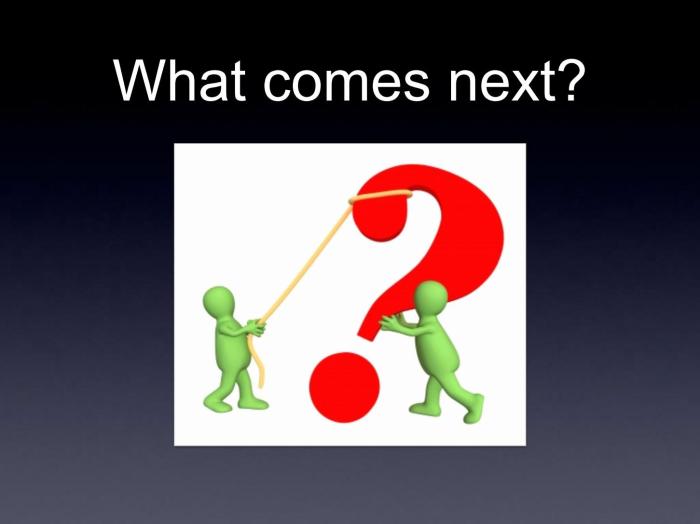Ever wondered what the future holds? We’ve all got those “What if…” moments, staring into the cosmic abyss of uncertainty. Whether it’s the next big tech breakthrough, a world-changing event, or just what’s for dinner, predicting the future is a game we all play.
But can we really crack the code and see what’s coming next? Buckle up, because we’re about to dive into the fascinating world of prediction, forecasting, and the wild ride of the future.
From the rise and fall of empires to the latest viral TikTok trend, history is littered with both mind-blowing predictions and epic fails. So, what’s the deal? How do we navigate the unpredictable waters of the future? We’ll explore the tools, the techniques, and the wild cards that shape what comes next.
Get ready to think outside the box, because the future is anything but predictable.
The Nature of Prediction
Predicting the future is a human endeavor that has fascinated and frustrated us for centuries. While we yearn to know what lies ahead, the inherent uncertainty of the future makes accurate prediction a challenging, if not impossible, task.
Factors Influencing Prediction
The accuracy of our predictions is influenced by various factors. These include:
- Data Availability:The more data we have about past events and current trends, the better equipped we are to make informed predictions. For instance, weather forecasting relies heavily on data from satellites, weather stations, and historical weather patterns.
- Technological Advancements:Advancements in technology, particularly in areas like artificial intelligence and machine learning, have significantly enhanced our ability to analyze data and make predictions. For example, algorithms can now analyze vast amounts of data to predict customer behavior or stock market trends.
- Societal Trends:Understanding societal trends, such as demographic shifts, cultural changes, and economic fluctuations, is crucial for predicting future outcomes. For instance, predicting the growth of a particular industry might involve considering factors like consumer preferences, government policies, and technological advancements.
Forecasting in Different Fields

Forecasting is a fundamental tool used across diverse fields to make informed decisions and anticipate future trends. It involves using historical data, statistical models, and expert insights to predict future events and outcomes. By understanding the various forecasting methods and their applications, individuals and organizations can gain valuable insights to navigate uncertainties and make strategic choices.
Applications of Forecasting
Forecasting is a crucial element in various fields, playing a significant role in decision-making and planning. Here are some prominent examples:
- Economics: Economists use forecasting to predict economic growth, inflation rates, unemployment levels, and other key indicators. This information helps governments and businesses formulate policies and make informed investment decisions.
- Finance: Financial forecasting is used to predict stock prices, interest rates, and currency exchange rates. This helps investors make investment decisions and manage risk.
- Weather: Meteorologists use forecasting models to predict weather patterns, including temperature, precipitation, and wind speed. This information is vital for public safety, agriculture, and transportation.
- Technology: Forecasting is used in the technology sector to predict the adoption of new technologies, market demand for products and services, and the growth of specific industries. This helps businesses make strategic decisions about research and development, product launches, and market positioning.
Forecasting Methods
Forecasting methods can be broadly categorized into quantitative and qualitative approaches, each with its strengths and limitations.
Quantitative Forecasting
Quantitative forecasting methods rely on mathematical models and statistical analysis to predict future outcomes based on historical data.
- Time Series Analysis: This method involves analyzing past data patterns to identify trends, seasonality, and cycles. By extrapolating these patterns, forecasts can be generated for future periods. Examples include moving averages, exponential smoothing, and ARIMA models.
- Regression Analysis: This method uses statistical techniques to establish relationships between variables. By identifying the relationships between historical data and relevant factors, forecasts can be made for the dependent variable. For instance, predicting sales based on advertising expenditure and market share.
- Causal Models: These models aim to identify and quantify the causal relationships between variables. By understanding the underlying causal factors, forecasts can be made with greater accuracy. An example is predicting demand for a product based on changes in consumer income and price.
So, you’re wondering “What Comes Next?” We all do sometimes, right? It’s like that feeling you get when you’re at the end of your favorite Netflix show, and you’re just not ready for it to be over. But hey, maybe the next chapter is even better! That’s what they say in A Taste of Hope: Hope Has Many Flavors , a blog that reminds us that hope is always on the menu, no matter what life throws our way.
And when you’ve got hope, anything is possible, right? So, what’s next? Go out there and make it epic!
Qualitative Forecasting
Qualitative forecasting methods rely on expert opinions, subjective judgments, and qualitative information to make predictions.
So, you’re wondering what comes next? Well, buckle up, buttercup, because things are about to get wild! You can Download And Listen Here and dive right into the action. Trust me, you won’t be disappointed. Get ready for a rollercoaster ride of twists and turns, you’ll be saying “OMG!” before you know it.
What comes next? Get ready to find out!
- Delphi Method: This method involves soliciting opinions from a group of experts through multiple rounds of questionnaires and feedback. The goal is to achieve consensus and reduce biases in individual opinions.
- Market Research: This method involves collecting data from customers, competitors, and industry experts through surveys, focus groups, and interviews. This information can be used to understand market trends, consumer preferences, and competitive landscape.
- Scenario Planning: This method involves developing multiple scenarios based on different assumptions about future events. By analyzing these scenarios, organizations can prepare for potential risks and opportunities.
Comparison of Quantitative and Qualitative Forecasting Approaches
| Characteristic | Quantitative Forecasting | Qualitative Forecasting |
|---|---|---|
| Data Reliance | Heavily reliant on historical data | Relies on expert opinions and subjective judgments |
| Objectivity | Objective and mathematically driven | Subjective and prone to biases |
| Accuracy | Potentially more accurate for short-term forecasts | Less accurate for long-term forecasts |
| Complexity | Can be complex and require specialized skills | Relatively simpler and less technical |
| Applications | Suitable for forecasting predictable patterns | Effective for forecasting uncertain or rapidly changing situations |
The Role of Imagination and Innovation

The ability to envision and create what doesn’t yet exist is the driving force behind progress. Imagination and innovation are the twin engines that propel us forward, pushing the boundaries of what’s possible and shaping the future we inhabit.
The Power of Imagination
Imagination is the birthplace of new ideas, the fertile ground where possibilities blossom. It’s the ability to transcend the limitations of the present and envision what could be. Without imagination, we’d be trapped in the confines of the familiar, unable to conceive of anything beyond what we already know.
“Imagination is more important than knowledge. For knowledge is limited, whereas imagination embraces the entire world.”
Albert Einstein
Examples of Unthinkable Advancements
The history of innovation is replete with examples of technologies that were once considered impossible, yet became reality through the power of imagination. Take, for instance, the internet. In the 1960s, the idea of a global network connecting computers seemed like science fiction.
But visionaries like J.C.R. Licklider and Robert Taylor dared to imagine such a world, and their imagination fueled the development of the internet, transforming the way we communicate, access information, and live our lives. Another striking example is the smartphone.
In the early 1970s, Martin Cooper envisioned a device that could make calls from anywhere, a “portable phone.” His imagination, combined with technological advancements, gave birth to the smartphone, a device that has become an indispensable part of modern life, enabling us to connect, learn, and create in ways that were unimaginable just a few decades ago.
So, you’re wondering what comes next? Maybe you’re feeling a little burnt out from the daily grind, or maybe you just need a new hobby to keep your mind sharp. Well, how about unleashing your inner artist with the Classic Cars Coloring Book Large Print Coloring Book For Adults Coloring Books For Men Classic Cars Simple Designs for Adults Seniors and Beginners.
? It’s a fun and relaxing way to de-stress, and it’s a great way to get creative and tap into your inner child. Who knows, you might even discover a hidden talent! And once you’ve mastered the art of coloring classic cars, you’ll be ready to tackle any challenge that comes your way.
Cultivating a Creative Mindset
To navigate the unknown and embrace the future, we need to cultivate a more creative and innovative mindset. Here are some ways we can do this:
- Embrace curiosity:The world is full of wonders, and the more we ask questions, the more we discover. Curiosity is the spark that ignites creativity, prompting us to explore new ideas and possibilities.
- Challenge assumptions:Don’t be afraid to question the status quo and explore alternative perspectives. Breaking free from conventional thinking can lead to groundbreaking discoveries.
- Embrace failure:Failure is an inevitable part of the creative process. It’s not a sign of weakness, but an opportunity to learn and grow. By embracing failure, we can overcome our fear of taking risks and unlock new avenues for innovation.
- Collaborate and connect:Sharing ideas and perspectives with others can spark new insights and accelerate the innovation process. Collaboration fosters a sense of community and encourages the exchange of knowledge and inspiration.
Book Review: “The Future of Humanity” by Michio Kaku

This book delves into the profound possibilities and challenges of the 21st century, taking us on a captivating journey through scientific advancements and their implications for our future. Kaku, a renowned theoretical physicist, masterfully blends scientific concepts with insightful observations about humanity’s potential and the crucial choices we face.
Key Themes, Author’s Perspective, Supporting Evidence, and Your Analysis
The following table presents a concise breakdown of the key themes, author’s perspective, supporting evidence, and analysis of “The Future of Humanity.”
So, what’s next for the NBA? It’s always a wild ride, but with the league celebrating its 75th anniversary, we’re all about looking back at the legends who paved the way. Check out the NBA’s 50 Greatest Basketball Players of All-Time 75th Anniversary Edition for some serious hoops history.
But, what comes next for the game? The future’s always got something cookin’, and we can’t wait to see what the next chapter brings!
| Key Themes | Author’s Perspective | Supporting Evidence | Your Analysis |
|---|---|---|---|
| Technological Singularity | Kaku believes that the convergence of artificial intelligence, nanotechnology, and biotechnology will lead to a technological singularity, where machines surpass human intelligence and create a new era of unprecedented advancement. | He cites the exponential growth of computing power, the development of artificial neural networks, and the increasing capabilities of robots as evidence for this trend. | Kaku’s perspective aligns with the views of other prominent futurists like Ray Kurzweil, who also predicts a technological singularity. While the timeframe and exact nature of this event remain debated, the potential impact of rapidly advancing technologies is undeniable. |
| Space Colonization | Kaku envisions humanity expanding beyond Earth, establishing colonies on other planets and celestial bodies. He believes this is essential for our long-term survival and prosperity. | He highlights the growing interest in space exploration, advancements in rocketry and spacecraft design, and the discovery of potentially habitable planets. | While space colonization presents immense challenges, Kaku’s optimism is grounded in the ongoing progress of space technology. The potential for resource extraction, scientific discovery, and even escaping potential Earth-bound threats makes space colonization a compelling goal for humanity. |
| Nanotechnology and Biotechnology | Kaku emphasizes the transformative potential of nanotechnology and biotechnology. He believes these fields will revolutionize medicine, energy production, and materials science. | He cites the development of nanobots, gene editing technologies like CRISPR, and the potential for creating new materials with unprecedented properties. | Kaku’s vision of a future shaped by nanotechnology and biotechnology is shared by many experts. These fields hold the promise of addressing major challenges like disease, climate change, and resource scarcity, but also raise ethical concerns that must be carefully considered. |
Ultimate Conclusion
So, what’s the takeaway? While we can’t predict the future with absolute certainty, we can embrace the power of data, imagination, and a dash of “what if.” By understanding the forces at play and cultivating a forward-thinking mindset, we can navigate the unknown with a sense of purpose and excitement.
After all, the future is what we make it, and the possibilities are as endless as the stars. So, get out there, embrace the unknown, and let’s shape the future together, one wild ride at a time.
FAQ Overview
What are some real-life examples of accurate predictions?
Some accurate predictions include the invention of the internet, the rise of mobile technology, and the increasing importance of artificial intelligence. These predictions were based on existing trends and technological advancements.
How can I improve my own ability to predict the future?
Stay informed about current events, pay attention to emerging technologies, and cultivate a curious and open mind. Reading books and articles about the future, attending conferences, and engaging in conversations with experts can also help you develop your forecasting skills.
Is there a single method for predicting the future?
No, there isn’t a single method. A combination of data analysis, expert opinion, and imaginative thinking is often required. It’s important to consider multiple perspectives and approaches.
What role does technology play in shaping the future?
Technology is a powerful driver of change. From advancements in artificial intelligence to breakthroughs in medicine, technology has the potential to revolutionize our world. It’s crucial to stay informed about emerging technologies and their potential impact.

